The Evolving Conversation
on Health and Wellness
Exclusive insights powered by
The Twitter Conversation Report
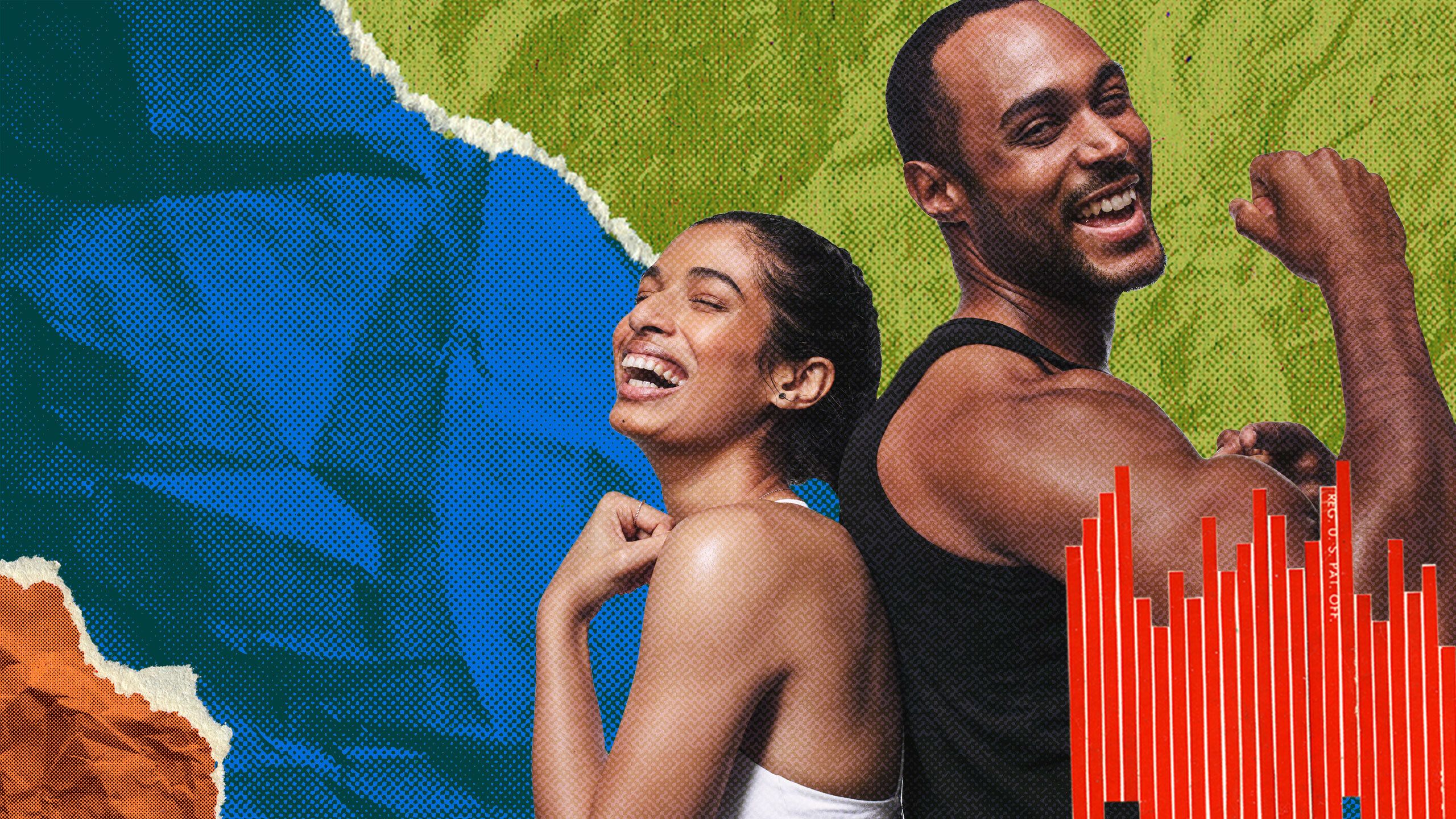
The Evolving Conversation on Health and Wellness
Exclusive insights powered by The Twitter Conversation Report

The past two-plus years have been a lot for people to handle, but something positive that has come out of the upheaval is how people talk about health and wellness. Conversations have become more widespread, community-oriented, encouraging and supportive.
As more and more consumers integrate health and wellness practices into their daily lives, they also share their feelings passionately online in spaces they trust. At the same time, brands are finding their place in the growing conversation and expanding how they participate and engage with consumers in the space.
While conversations in the past may have focused on diets and exercise, consumer understanding about health and wellness has greatly expanded over the past few years. Today, it can cover a wide range of topics: medicine and supplements, mental health, sleep hygiene, nutrition and body image, mindfulness and meditation, organic lifestyles and anything else that improves how people feel about themselves. It also includes the products and technology that helps people achieve their goals, from the athleisure apparel that makes them feel good, to the fitness technology that helps keep track of their progress. In fact, the health and wellness industry is growing exponentially. A recent McKinsey study pegged it as a $1.5 trillion market.
So, what are people talking about when they talk about health and wellness?
Adweek partnered with The Twitter Conversation Report—Twitter's episodic content series featuring only-on-Twitter conversation insights for marketers—for exclusive research that revealed conversations focused on wellness on the platform have expanded exponentially over the past two years.
The numbers tell the story.
On Twitter, personal health stories are driving public conversation. And the conversation is buzzing with consumers seeking information and forming communities. They’re open about the challenges they face and are looking for other likeminded people and support.
At the same time, consumers are also keeping an eye out for new tools to help them on their path to better health and wellness. They’re looking for new products and services in the health space and using technology to measure their progress.
These insights are invaluable to brands looking to be part of the health and wellness conversation as they aim to both understand new consumer behaviors and boost their visibility and relevance.
The good news is that people on Twitter are eager to hear from the brands they care about: Brands that have effectively engaged in the health and wellness conversation experienced an 83% increase in impressions, a 44% leap in retweets and a 73% increase in likes on their posts1.
Two years ago, as the pandemic took hold, many people talking about health and wellness focused on the challenges they were facing in a tone that could best be described as reactive. Conversations were more often about how people felt their health may be out of their control.
But over the past year, there has been a marked shift in that tone. Today, people are taking a more proactive and empowered tone—they’re identifying ways they want to improve, the ways they want to support others and be supported, and the ways they want to grow.
It all boils down to being more motivational. Consider, for instance, how trending hashtags have more clearly focused on topics related to progress, support and mindfulness.
The way that people on Twitter interact with one another or with brands as they discuss health and wellness education has also changed. People aren’t just talking; they’re showing and emoting. In the past year, the use of videos (up 42%) and GIFs (up 14%) have increased as people take to Twitter to express what they feel and what they’re doing1.
Ways I’m hoping to improve myself this month.
— Bruce 💫 (@InfiniDream1) June 2, 2022
- Meditate every day.
- Go out walking 3 times a week.
- Drink more water
- Eat healthier
What about you?
What It Means For Brands
Take the right tone
Tone is critical to the health and wellness conversation. People actively looking for information are in discovery mode. Make your content informative, instructive and welcoming. Stay positive. People may be in search of community, so create content surrounding your brand that brings like-minded people together.
Go beyond words
Pay attention to format. You don’t just have to share words. Use videos and GIFs to attract peoples’ attention.
Be supportive
Reassuring and sympathetic ways of discussing wellness have become more prevalent since last year. There were marked increases year-over-year in tweets of phrases like “Encourage” (+77%), “Suggesting” (+55%) and “Supported” (+30%)1.
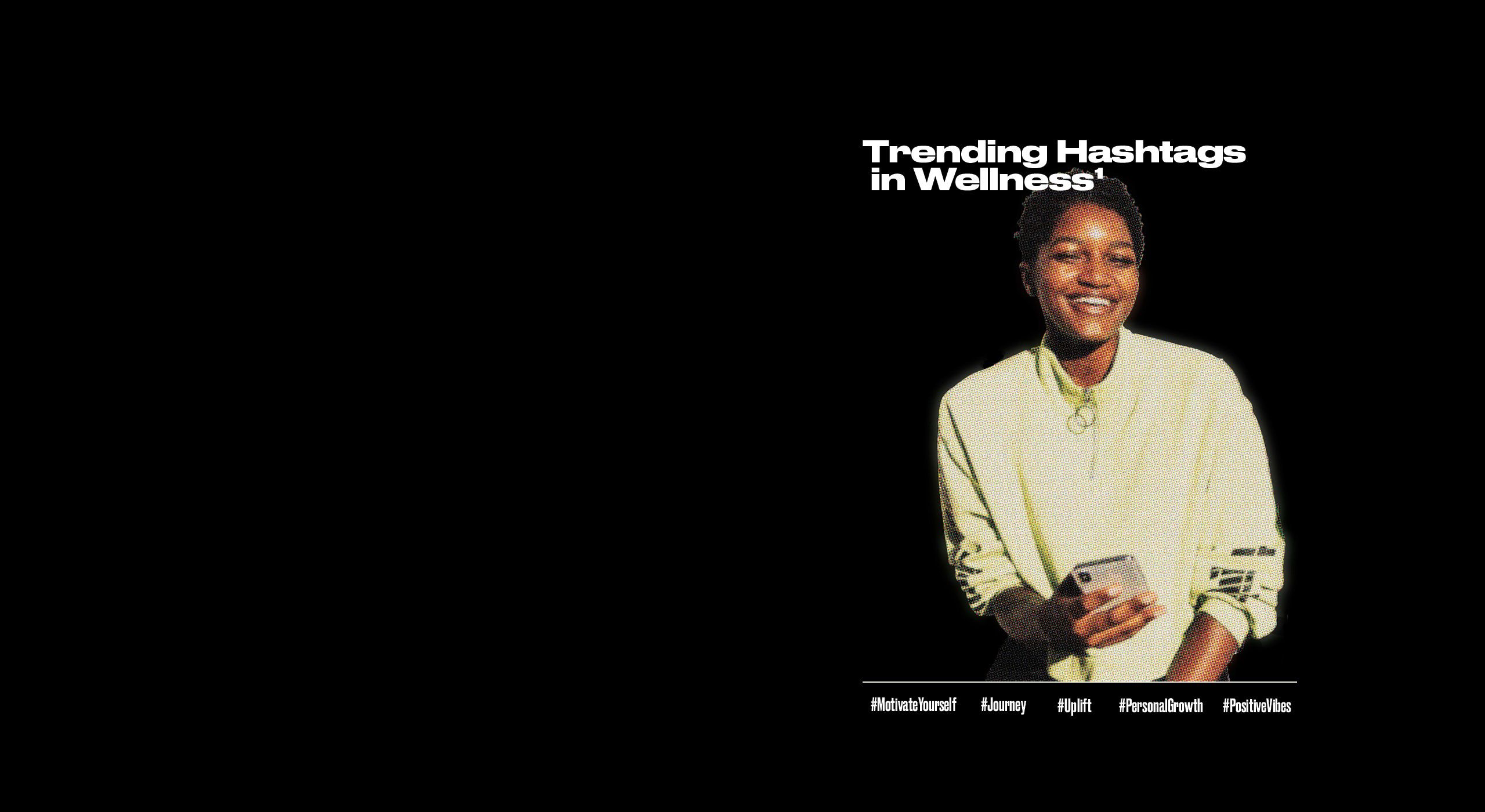

Two years ago, as the pandemic took hold, many people talking about health and wellness focused on the challenges they were facing in a tone that could best be described as reactive. Conversations were more often about how people felt their health may be out of their control.
But over the past year, there has been a marked shift in that tone. Today, people are taking a more proactive and empowered tone—they’re identifying ways they want to improve, the ways they want to support others and be supported, and the ways they want to grow.
It all boils down to being more motivational. Consider, for instance, how trending hashtags have more clearly focused on topics related to progress, support and mindfulness.
The way that people on Twitter interact with one another or with brands as they discuss health and wellness education has also changed. People aren’t just talking; they’re showing and emoting. In the past year, the use of videos (up 42%) and GIFs (up 14%) have increased as people take to Twitter to express what they feel and what they’re doing1.
Ways I’m hoping to improve myself this month.
— Bruce 💫 (@InfiniDream1) June 2, 2022
- Meditate every day.
- Go out walking 3 times a week.
- Drink more water
- Eat healthier
What about you?
What It Means For Brands
Take the right tone
Tone is critical to the health and wellness conversation. People actively looking for information are in discovery mode. Make your content informative, instructive and welcoming. Stay positive. People may be in search of community, so create content surrounding your brand that brings like-minded people together.
Go beyond words
Pay attention to format. You don’t just have to share words. Use videos and GIFs to attract peoples’ attention.
Be supportive
Reassuring and sympathetic ways of discussing wellness have become more prevalent since last year. There were marked increases year-over-year in tweets of phrases like “Encourage” (+77%), “Suggesting” (+55%) and “Supported” (+30%)1.
Over the past couple of years, many people have realized the need to prioritize mental health and have begun taking action.
People are now more willing to talk about the mental health issues they may be facing and are turning to their networks and communities to seek insights and support. For example, people on Twitter posted 1.4 million mental health-related tweets over the past year—that’s a 4-percentage point increase in share of voice year-over-year1.
Mental health has grown markedly as a topic of conversation among consumers and since 2020 there has been at least a 30% leap in tweet impressions, retweets and replies to tweets1.
It’s important for brands to understand that the people on Twitter are approaching health and wellness as a holistic journey, and mental health is a growing piece of the puzzle. Though physical fitness remains a common topic of conversation, discussion of mental wellbeing, stress management and work-life balance are on the rise.
Remember to do things for YOU. Not for someone else. Stand up for your boundaries, put your foot down. Fight for your happiness and mental health. It's hard but I believe in you. 🥰🤗 #MentalHealthMatters #inspiration #YouGotThis
— SimplyCheeto (@simplycheeto) May 5, 2022
Setting boundaries around your Mental Health is JUST as valid as setting them around your Physical Health.
— Dr. Jen | Neuropsychologist and Author 🧠 (@drjenwolkin) April 27, 2022
Mental Health IS Health.
What It Means For Brands
Listen carefully
Brands that focus on mental health, such as telehealth providers and recovery centers, will find an open and enthusiastic audience on Twitter. People’s willingness to share about the issues they face provides an opportunity for these brands to enter the conversation appropriately.
Be gentle
Conversations about mental health require a different tone than those about physical health. People are likely looking for support and reliable information so they can make an educated decision.
Show your support
Be a mental health advocate by using hashtags related to mental health awareness and support. Year-over-year, these are some compelling hashtags that have grown in use: #MentalHealthSupport (+105%), #MentalHealthMatters (+60%), #MentalHealthAwarenessMonth (+26%)1.

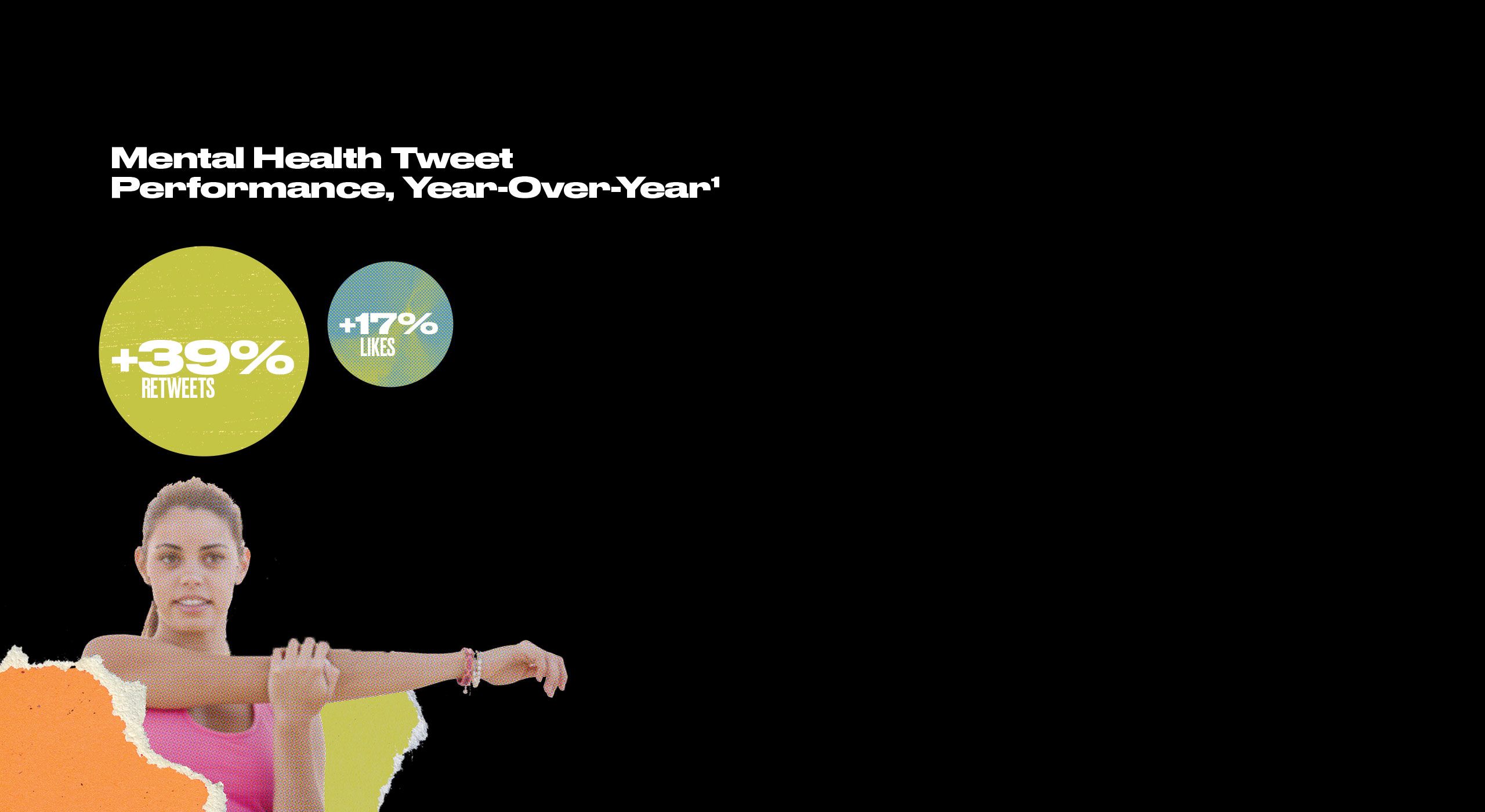
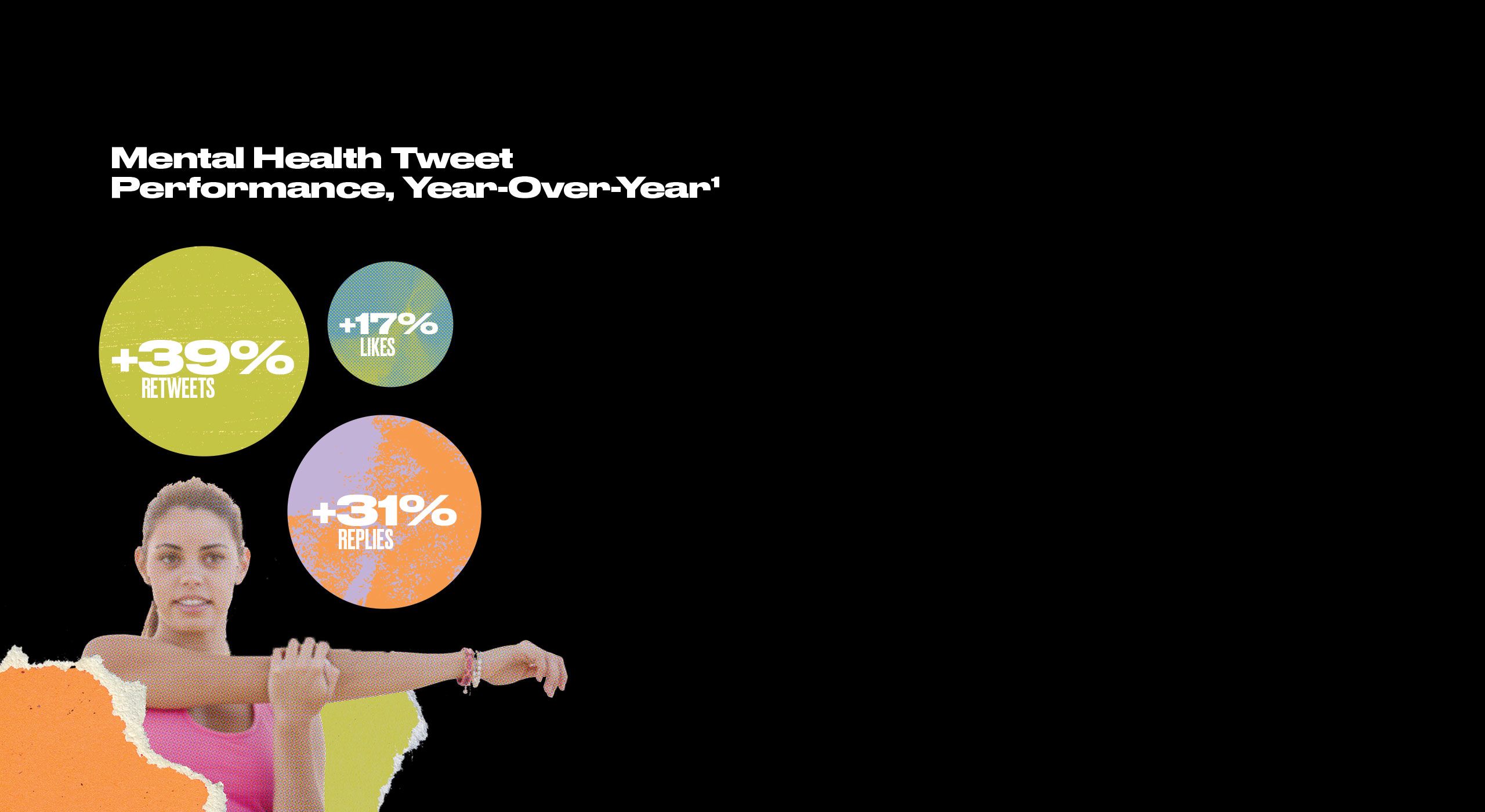
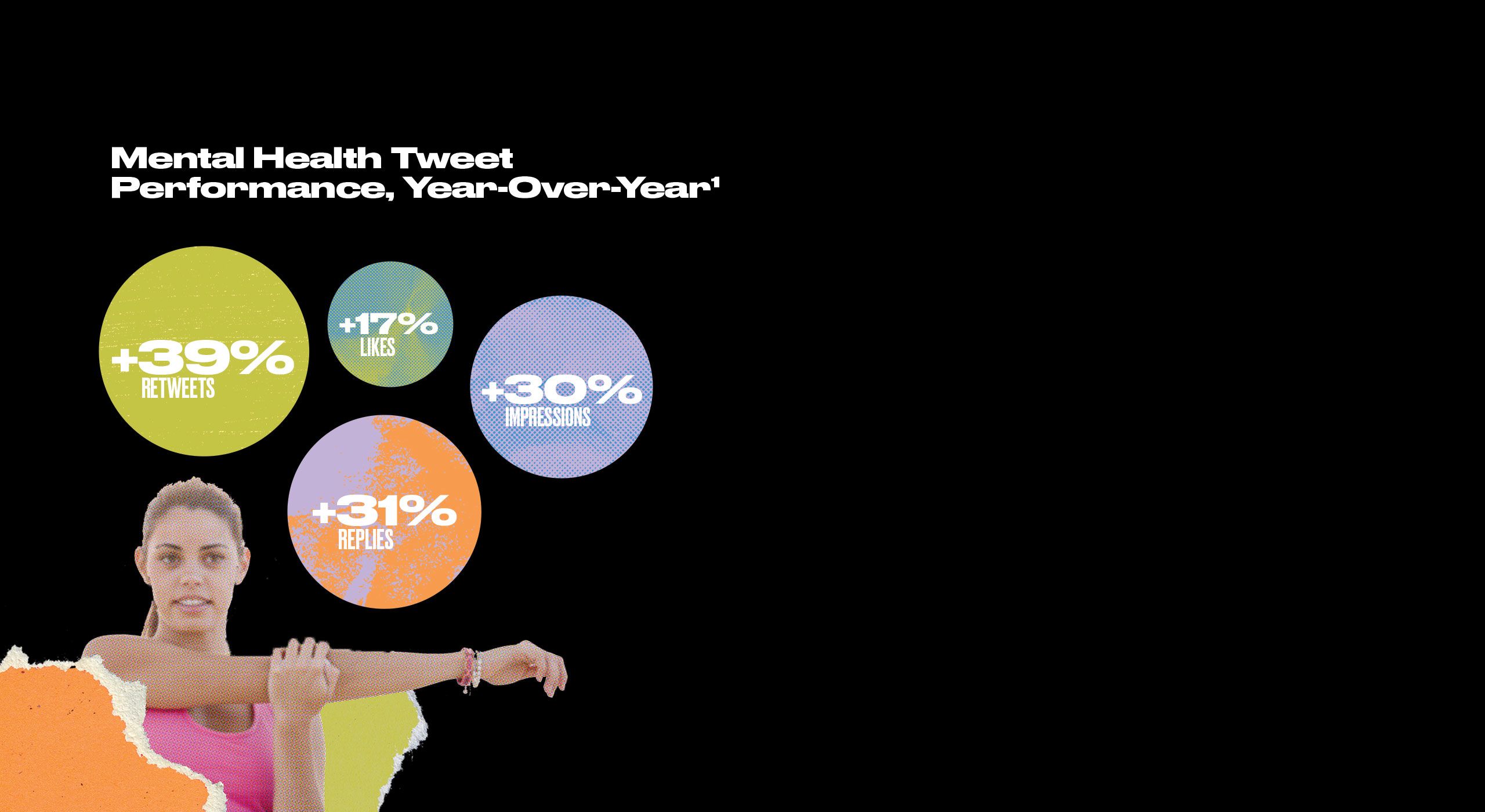
Over the past couple of years, many people have realized the need to prioritize mental health and have begun taking action.
People are now more willing to talk about the mental health issues they may be facing and are turning to their networks and communities to seek insights and support. For example, people on Twitter posted 1.4 million mental health-related tweets over the past year—that’s a 4-percentage point increase in share of voice year-over-year1.
Mental health has grown markedly as a topic of conversation among consumers and since 2020 there has been at least a 30% leap in tweet impressions, retweets and replies to tweets1.
It’s important for brands to understand that the people on Twitter are approaching health and wellness as a holistic journey, and mental health is a growing piece of the puzzle. Though physical fitness remains a common topic of conversation, discussion of mental wellbeing, stress management and work-life balance are on the rise.
Remember to do things for YOU. Not for someone else. Stand up for your boundaries, put your foot down. Fight for your happiness and mental health. It's hard but I believe in you. 🥰🤗 #MentalHealthMatters #inspiration #YouGotThis
— SimplyCheeto (@simplycheeto) May 5, 2022
Setting boundaries around your Mental Health is JUST as valid as setting them around your Physical Health.
— Dr. Jen | Neuropsychologist and Author 🧠 (@drjenwolkin) April 27, 2022
Mental Health IS Health.
What It Means For Brands
Listen carefully
Brands that focus on mental health, such as telehealth providers and recovery centers, will find an open and enthusiastic audience on Twitter. People’s willingness to share about the issues they face provides an opportunity for these brands to enter the conversation appropriately.
Be gentle
Conversations about mental health require a different tone than those about physical health. People are likely looking for support and reliable information so they can make an educated decision.
Show your support
Be a mental health advocate by using hashtags related to mental health awareness and support. Year-over-year, these are some compelling hashtags that have grown in use: #MentalHealthSupport (+105%), #MentalHealthMatters (+60%), #MentalHealthAwarenessMonth (+26%)1.
Women are often thought of as the typical health and wellness consumer. But over the past year, men have become much more engaged. How much so? Men now make up 49% of the wellness conversation, a leap from 41% last year1.
Still, there are significant differences between what men and women talk about when they discuss health and wellness.
Both men and women talk about dieting, but that’s where most of the commonality ends. Men are more likely to align with things like financial wellness and technology. Women often align their health and wellness conversations around issues like work-life balance or careers.
Women are twice as likely to be discussing topics surrounding self-care (2.1 times) and gluten-free lifestyles (2 times) than men2. Meanwhile, men are more likely to discuss fitness blogs (4.3 times) and bodybuilding (2.9 times) than women2.
Your physical, mental, spiritual, relational, and financial wellness are all related.
— Cody Garrett, CFP®️ (@MeasureTwiceMNY) May 30, 2022
Burnout often occurs when you are focusing too much on the financial area, allowing the others to slip away.
Poor work-life balance ≠ a successful person
— Ruehie Jaiya Karri (@klutzgal) May 17, 2022
Poor work-life balance ≠ your self-worth
.
.
.
Poor work-life balance = burnout
There, I said it.
What It Means For Brands
Know your audience
Tailor your messaging to your specific audience when you join the health and wellness conversation. Men’s interest in financial health can open the door for fintech brands, for instance. Women’s issues related to work-life balance and careers could allow HR-related companies to join in.
Craft your messaging wisely
Part of partitioning your message will depend on the goods and services your brand offers. Think about how to form your message in a way that engages both men and women—or create separate messaging.
Sources
1 Twitter Internal Data (Big Query). U.S. only. Tweets from March 1, 2020 - March 1, 2021 and March 1, 2021 - March 1, 2022.
2 Twitter Internal Data (Big Query). U.S. only. Tweets from March 1, 2021 - March 1, 2022.
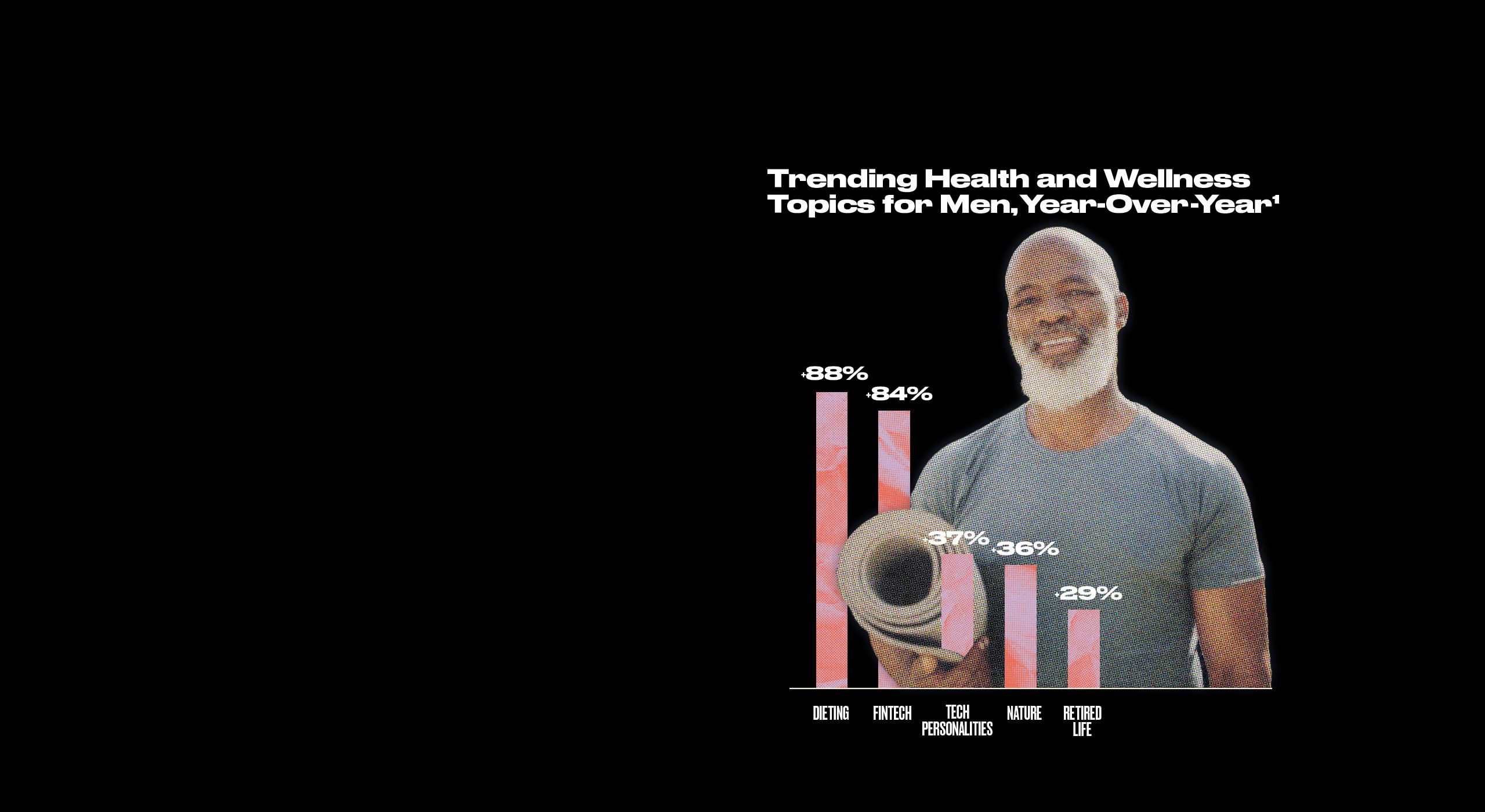
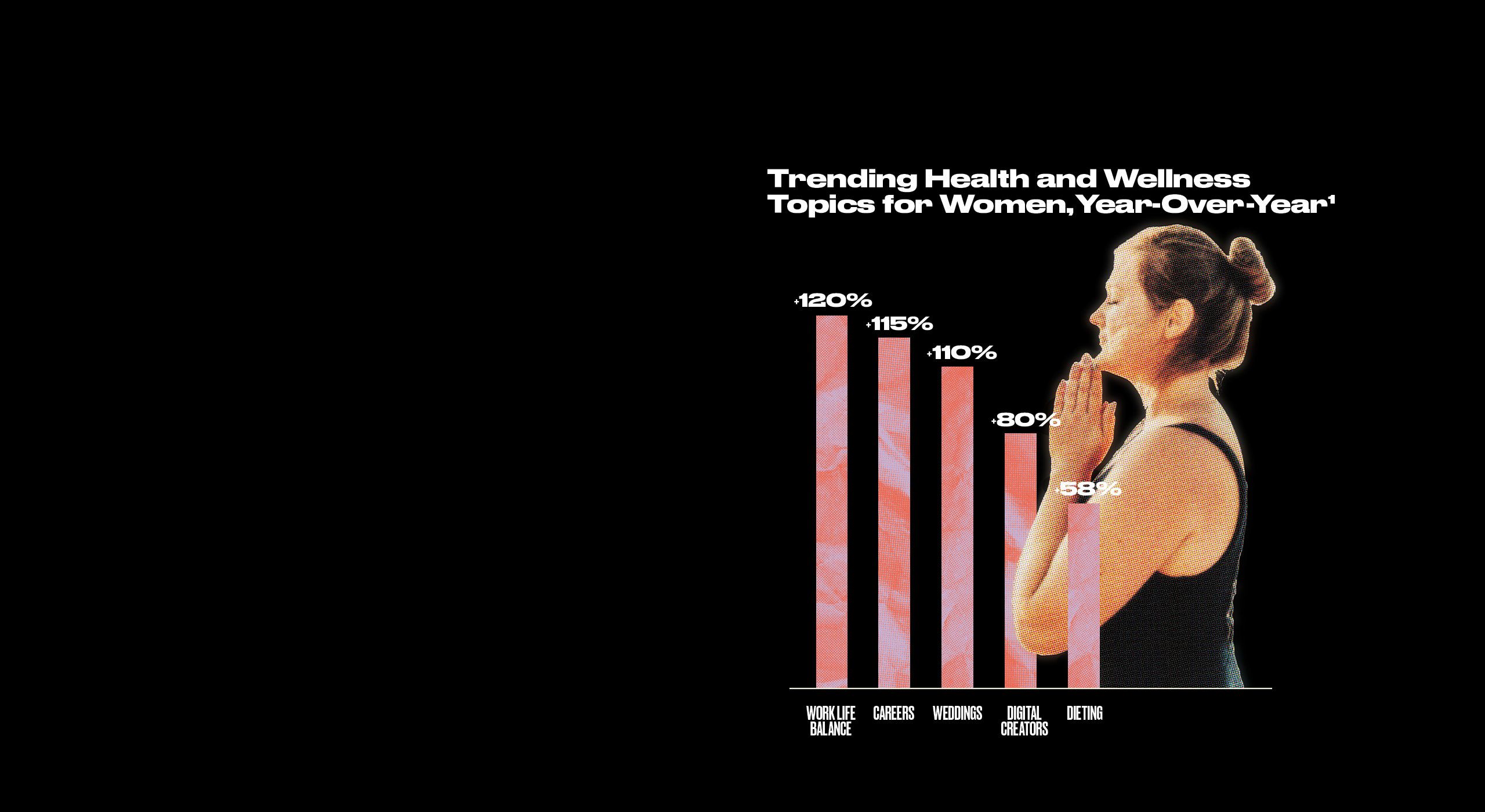
Women are often thought of as the typical health and wellness consumer. But over the past year, men have become much more engaged. How much so? Men now make up 49% of the wellness conversation, a leap from 41% last year1.
Still, there are significant differences between what men and women talk about when they discuss health and wellness.
Both men and women talk about dieting, but that’s where most of the commonality ends. Men are more likely to align with things like financial wellness and technology. Women often align their health and wellness conversations around issues like work-life balance or careers.
Women are twice as likely to be discussing topics surrounding self-care (2.1 times) and gluten-free lifestyles (2 times) than men2. Meanwhile, men are more likely to discuss fitness blogs (4.3 times) and bodybuilding (2.9 times) than women2.
Your physical, mental, spiritual, relational, and financial wellness are all related.
— Cody Garrett, CFP®️ (@MeasureTwiceMNY) May 30, 2022
Burnout often occurs when you are focusing too much on the financial area, allowing the others to slip away.
Poor work-life balance ≠ a successful person
— Ruehie Jaiya Karri (@klutzgal) May 17, 2022
Poor work-life balance ≠ your self-worth
.
.
.
Poor work-life balance = burnout
There, I said it.
What It Means For Brands
Know your audience
Tailor your messaging to your specific audience when you join the health and wellness conversation. Men’s interest in financial health can open the door for fintech brands, for instance. Women’s issues related to work-life balance and careers could allow HR-related companies to join in.
Craft your messaging wisely
Part of partitioning your message will depend on the goods and services your brand offers. Think about how to form your message in a way that engages both men and women—or create separate messaging.
Sources
1 Twitter Internal Data (Big Query). U.S. only. Tweets from March 1, 2020 - March 1, 2021 and March 1, 2021 - March 1, 2022.
2 Twitter Internal Data (Big Query). U.S. only. Tweets from March 1, 2021 - March 1, 2022.

The Twitter Conversation Report is an episodic content series elevating only-on-Twitter pulse of the conversation insights for marketers. As the world’s largest focus group, the conversation on Twitter provides marketers a valuable window into what people are saying and what they care about. The world is changing fast. Leading with human insights helps customers understand and gain an edge to act when they’re looking to launch or connect.
Illustrated by Anthony Gerace


The Twitter Conversation Report is an episodic content series elevating only-on-Twitter pulse of the conversation insights for marketers. As the world’s largest focus group, the conversation on Twitter provides marketers a valuable window into what people are saying and what they care about. The world is changing fast. Leading with human insights helps customers understand and gain an edge to act when they’re looking to launch or connect.
Illustrated by Anthony Gerace



 Built with Shorthand
Built with Shorthand





